Cashewnüsse fair genießen
Bei Kaffee, Kakao und Palmöl ist Nachhaltigkeit schon lange ein Thema. Doch auch bei anderen Agrarrohstoffen wie etwa Cashewnüssen besteht Handlungsbedarf. Wir sprachen darüber mit Rita Weidinger, die im Auftrag der GIZ ein Projekt in Afrika begleitet. Das Interview führte Sven Grönwoldt von Hoffmann und Campe X im Auftrag von Intersnack.
04.10.2017
GIZ is a sustainability-oriented service provider working to promote global sustainable development. What success factors and challenges do you see for your organisation in years to come?
Rita Weidinger: An African proverb says: “If you want to go fast, go alone. If you want to go far, go together.” Cooperation, joint steering, innovation and learning have been the bedrock of the private-public partnership development programme Competitive Cashew Initiative – ComCashew (formerly African Cashew initiative – ACi). The wide impact proves that it pays off. Currently, more than 400,000 farmers have been able to double their incomes, and 40 medium and small processing companies have been supported in their start-up and expansion phase to process ten percent of the crop, compared with three percent in 2009 when the project started.
Success attracts followers: The project started with two main donors – the German government (BMZ) and the Bill and Melinda Gates Foundation – and a few private partners, including Intersnack. Gradually, more players are joining the cashew sector with collaborative, but also competitive interests. Continuous innovation and learning: The cashew sector was not structured and innovations not shared. Increasing transparency requires further speed and investments in research and monitoring to adjust to fast-changing sector issues, especially in processing and farming technology. Market information: Structuring a supply chain requires informed decision-making. Industry partners, with Intersnack amongst them through its strong engagement, initiated an innovative system (3S) to increase the transparency of the supply chain, which is being further strengthened and expanded.
What opportunities and risks do you see in the context of current developments in raw material production for the food industry?
Weidinger: The opportunities that the increasing supply gap for cashew nuts present are manifold. There is gradual shift towards Africa to meet this gap, which currently accounts for 58 percent of global production. However, low yields, capacity and skill gaps at all levels require our attention and thus demand more investment in research, extension and policy, and strategy development.
We are targeting an increase in productivity from 300–700 kg to a competitive level of more than 1.3 tons per hectare. Research, farming and trading practices do not yet focus on criteria of relevance for the processing industry, e.g. peelability, but rather concentrate on nut size and yield levels. Maintenance of existing farms is to be intensified, whilst new planting is to be extended, especially in marginal areas where climate change and youth migration affect the population most. The tree crop cashews has become a new darling for any planting programmes. Our challenge remains to not only provide volumes and stable and competitive prices, but to also keep a steady focus on quality and sustainable and traceable supply chains, as demanded by the consumer.
What potential do you see in public-private-partnership projects and what synergy effects can come from them?
Weidinger: A key element in private-public partnerships is the joint interest of a business and a public development goal. This medium term win-win business case is obvious for cashews: private industry needs a steady supply at competitive prices, whilst there is a huge income and employment potential for farmers and the processing industry. These synergies have been proven in more than 32 projects and over eleven million, involving buyers, processors and farming communities, but also including research and extension work. The success of such partnership projects depends essentially on the commitment of the industry partner(s) and the responsible person(s), their relationships, networks and capacities, all of which Intersnack has displayed in excellent fashion.
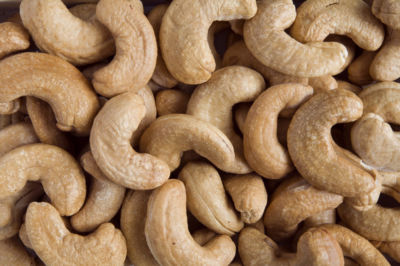
You head the ComCashew project in Africa. What strategy is this initiative pursuing?
Weidinger: The objective of ComCashew is to increase the competitiveness of the cashew value chain in five African countries: Benin, Burkina Faso, the Ivory Coast, Ghana and Mozambique. By 2018, this will directly benefit more than 500,000 smallholder farming families. We are also aiming at more employment in a new processing industry in Africa. Besides increasing farmers’ direct income, the initiative aims at improving cashew-processing capacities in Africa, developing sustainable supply chain linkages and supporting a better organisation and coordination of the cashew sector.
ComCashew addresses inefficiencies in the supply chain from the market to the raw material base. These gaps, including for instance, yield gaps, low and inconsistent quality, missing data and information, are jointly identified and worked on by industry and public partners. In order to overcome these issues, transparency on pre-competitive levels and joint learning and actions are key. One core activity of ComCashew is to develop the capacities of players across the value chain. A master training programme was drawn up for learning amongst key players, such as farmers, researchers, processors, policymakers and NGO staff. So far 180 experts have been trained from twelve countries in Africa.
ComCashew defines itself as a multi-stakeholder project. Who are your most important partners and how are they contributing to the development of the project?
Weidinger: The Competitive Cashew Initiative was founded as a joint initiative by private-sector partners. There are 16 board members, of whom half are private and half public and development partners. Since 2009, these partners have invested more than 100 million Euros for the project goals. Direct funding has been committed by the German Federal Ministry for Economic Cooperation and Development (BMZ) (2009–2018) and the Bill and Melinda Gates Foundation (2009–2016). Other public funding partners are the Dutch Sustainable Trade Initiative (IDH), USAID and government bodies from the project countries. The private-sector partners Intersnack, Walmart, KraftHeinz, OLAM and Trade and Development Group contribute through expertise, investments and risk sharing in the supply chain. Intersnack alone has been actively engaged in five projects.
The ComCashew project is led by Deutsche Gesellschaft für Internationale Zusammenarbeit (GIZ) GmbH along with other implementers such as the Dutch NGO FairMatch Support. The project functions in an interactive way with over 40 medium
and small-scale processing firms, and reaches out to over 400,000 mainly smallholder farmers.
Which other stakeholders are involved? And where are the particularly sensitive areas?
Weidinger: With an annual demand growth of 7–10 percent, there are many more buyers and interested investors approaching the project for information and support. New companies are venturing into the processing business. So far, the project is working with 40 processing factories by providing advisory services and supporting farmer linkages. NGOs, business consulting organisations and financial institutions need to understand the sector and its business case in processing and farming. Under ComCashew Matching Fund projects, buyers, processors and NGOs or consulting firms implement projects jointly. Two million smallholder farmers require information in intensifying and professionalising the farming business.
Private-sector players (farmers, processors, exporters and inter-professional bodies) come together at national and at regional levels (The African Cashew Alliance). Under the auspices of the International Nut Council (INC), the Global Cashew Council was formed to advocate and research into precompetitive issues of the sector. National government players and regional economic communities (such as ECOWAS) are currently being engaged for enabling policies and regulatory frameworks for cashews, and also to provide extensions to farmers. With ComCashew support, an international concertation body of cashew-producing countries – CICC – was formed in November 2016. International development agencies such as the German government, USAID/ USDA, IDH, the World Bank, the European Union and others are increasingly funding cashew sector projects.
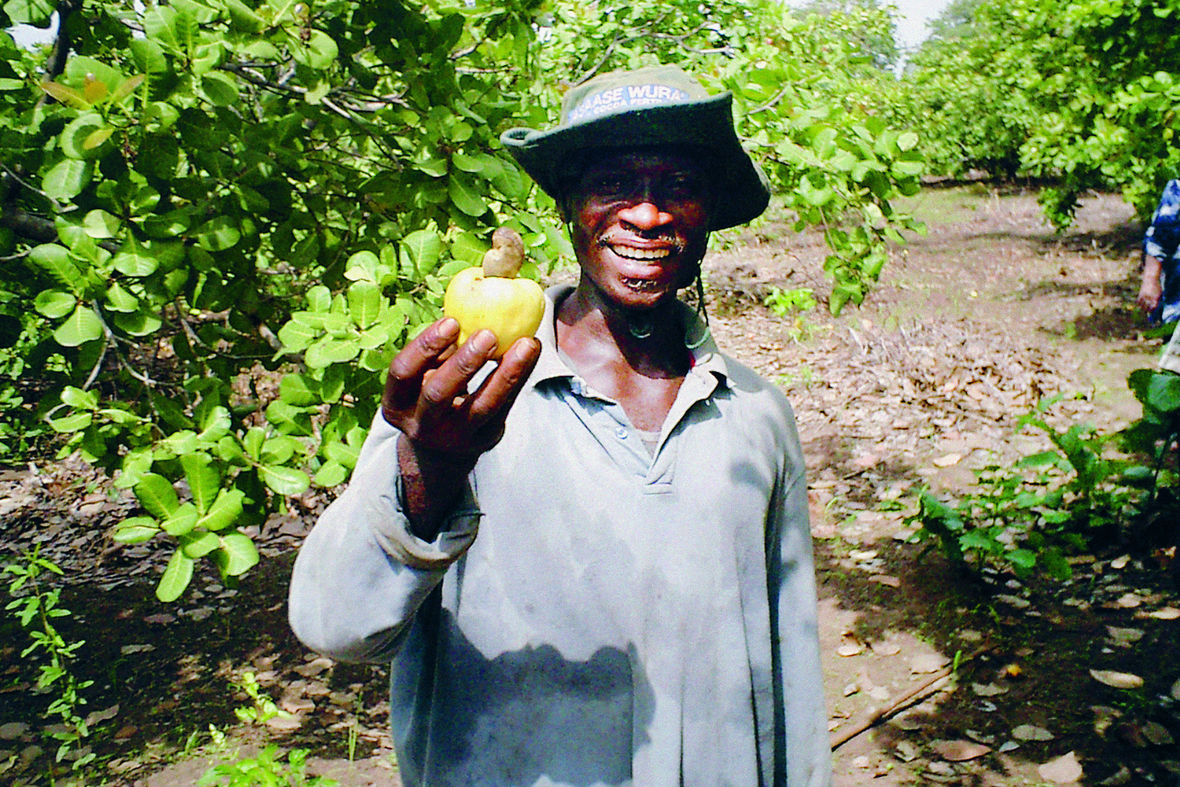
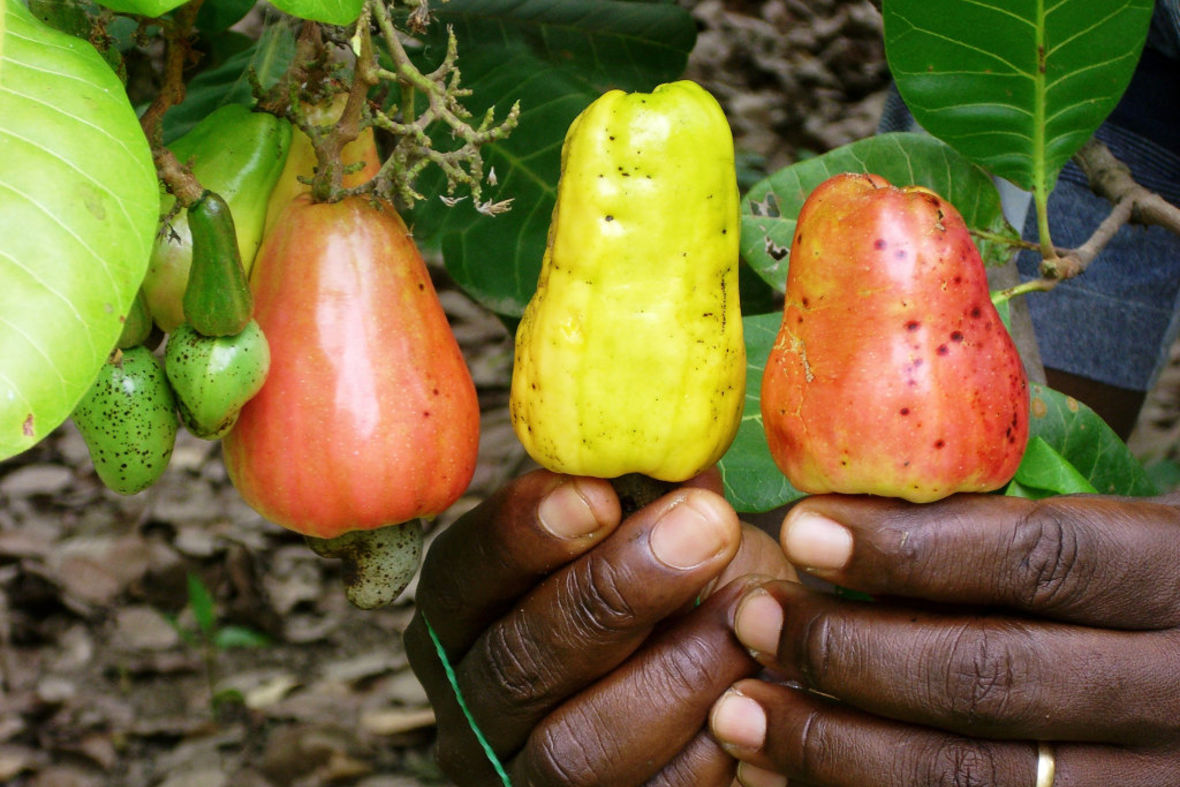
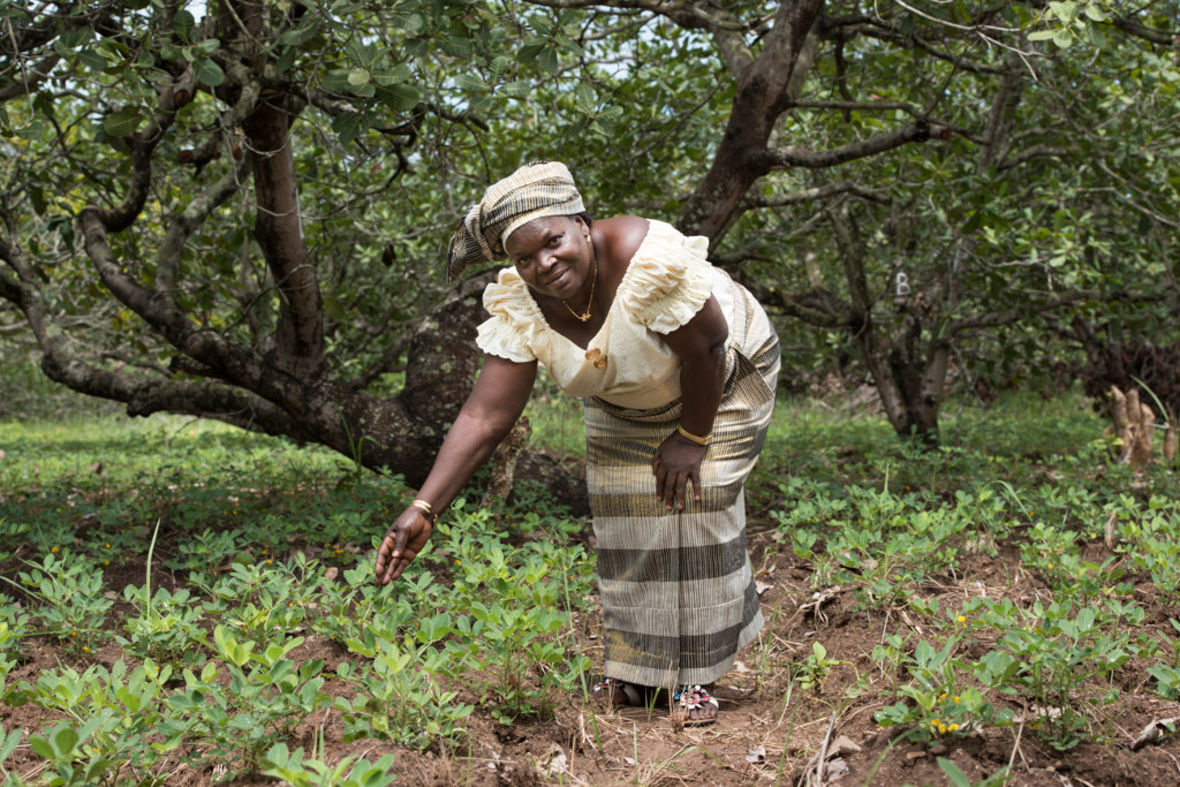
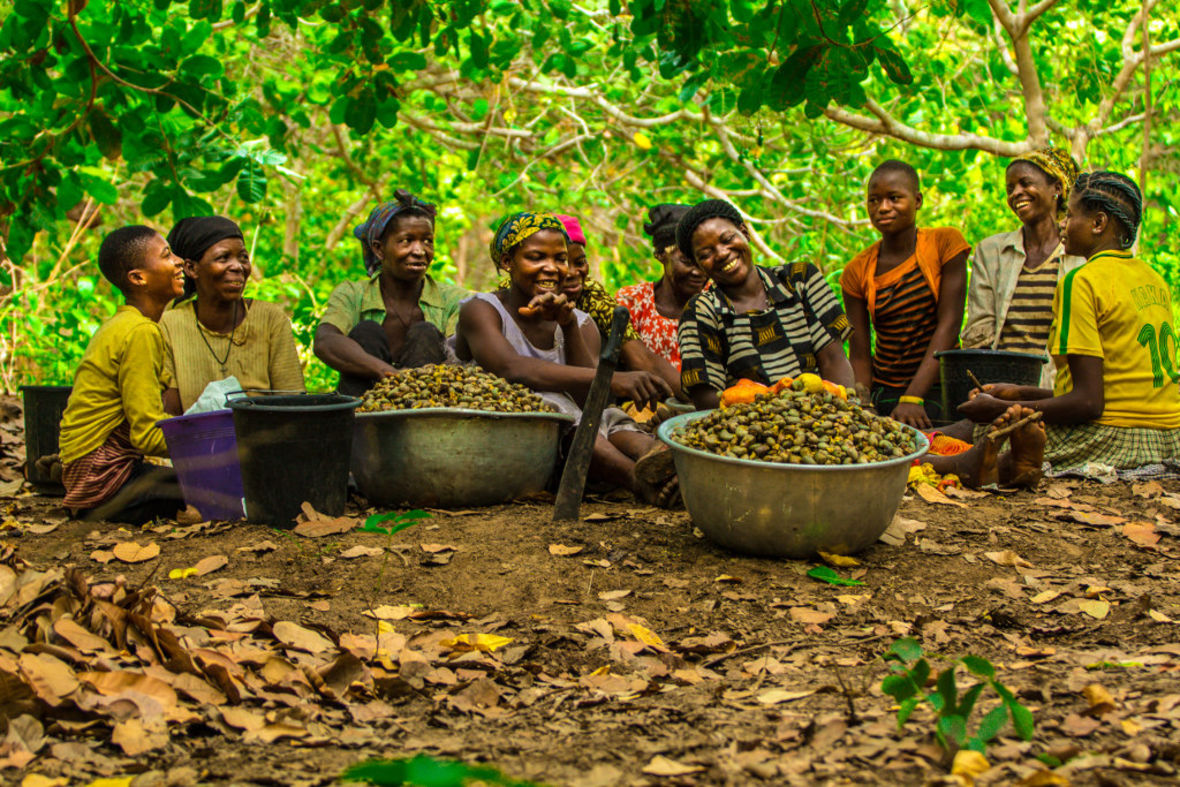
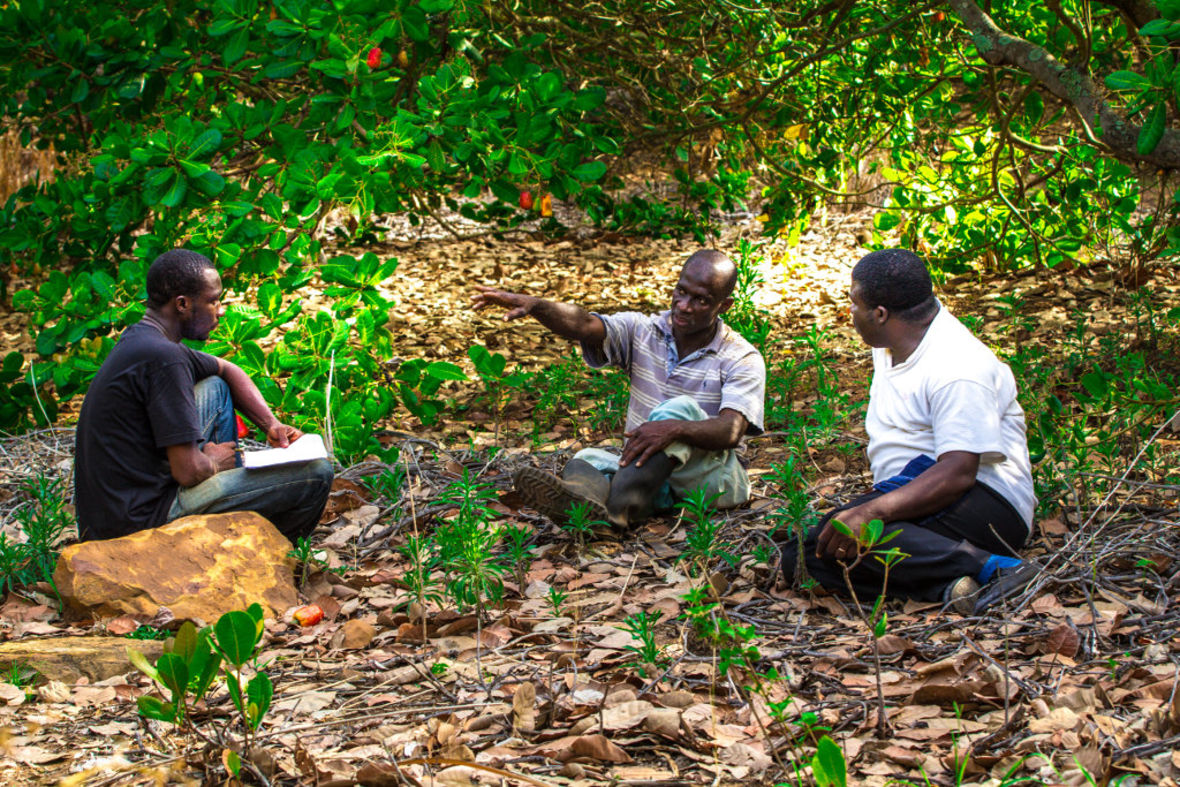
Are investments in more sustainable production and fair terms for local growers a direct guarantee of success for the major sourcing players?
Weidinger: Certainly! When farmers produce in a sustainable manner, the result is an increase in their direct income. Kernel buyers require transparency and increased responsibility of the farmers and processors they buy from. For seven years, farmers have been receiving higher annual prices for their cashews. With the development of modern sustainable high-yielding cashew farms and quality varieties, cashew farmers are more likely to increase their revenues based on yield and quality rather than price. This should result in sustainable raw cashew nut (RCN) prices that guarantee win-win situations for all direct players along the cashew value chain.
How difficult is it to sensitise all the market players to the need for a social, ecological and economically sustainable cashew trade – given that this comes at a price?
Weidinger: The cashew market in general is less structured than commodities such as cocoa, fruits and vegetables, which makes it more difficult to engage all the players for sustainable trade. However, this market perspective was integrated into the ComCashew project from the beginning, given that the project was developed jointly with key market players, namely Intersnack, KraftHeinz, Olam and Trade and Development Group. With time, other market players such as Walmart and Red River Foods also came on board. Following consumer demand, all partners are increasingly working towards responsible sourcing.
With a fragmented value chain of two million producers in Africa, and 90 percent of African RCN processed in Asia, a global view is required for the sustainable cashew trade. Whilst ComCashew concentrates on support for sustainable production and increased processing in Africa, a similar approach for regionally linked production and processing might be required in future for South East Asia. In the meantime, creative solutions for traceable cashews around the globe are still required. The management information system 3S, spearheaded by Intersnack, OLAM and others, seems to be a good stepping-stone to get there.
In this respect there is another influential group besides growers, buyers, processors and traders – consumers. How important is it to reach them?
Weidinger: Consumers are the main reason for all the work of ComCashew and its partners. Cashews are produced and processed for consumption. Consumers have a huge impact on the market requirements of retailers, especially in Europe and the USA. Thanks to the nutritious health benefits of cashew its consumption is growing at 7–10 percent per annum. Providing nutritional information and health benefits on cashews would promote its consumption even further. This work has been started by the Global Cashew Council under INC, as well as by the regional cashew associations (ACA, CEPCI, etc.). In addition, consumers, and especially those in Europe, are increasingly showing an interest in product origins. Reaching them with this information and clear social stories about producers is important in increasing cashew consumption as well as its sustainability.
When buying cashew nuts, most supermarket shoppers have shown little interest up to now in the origin of the produce. Would it be a good idea to demand and encourage more understanding for the growers’ needs amongst shoppers?
Weidinger: Education on the origins of cashews is important to ensure that consumers understand the product. European companies are in the lead on this, with some retailers, such as Ahold and enbuyers like Intersnack, having introduced sustainable sourcing systems to trace the product from origin to the shelf.
A successful marketing concept in the USA and Netherlands is telling stories about the origins of produce. This also arouses consumer interest for the supply chain issue. What do you think of this approach?
Weidinger: Storytelling is an excellent way of informing the consumer about the produce. It creates awareness of what the product is, where it comes from, how it is made and by whom. A story about a cashew farmer gives a face to the cashew nuts the consumer eats. In cases where products have well-elaborated stories, consumers are keen to know more. We believe that storytelling is an important concept for educating the consumer and encouraging market players to adopt similar concepts and approaches in consumer education. In ComCashew we also use storytelling in our multiple communications (www.comcashew.org).
What success story would you like to write for the ComCashew Initiative in the next few years?
Weidinger: In 2009, 90 percent of the households growing cashews were living below the poverty line and face the risk of periods of insecure food supplies. With the intervention of ComCashew, at least half of these farmers should be out of poverty by 2020. Since its inception, the project has supported transparency in the cashew sector worldwide. In a few years, we expect a more structured and formalised cashew sector with reliable and accessible data. Farmers’ competitiveness is to be further increased through high yields, farming efficiency and quality cashews produced on modern farms. Furthermore, we envision 100 percent in-country processing of the current crop, whilst doubling the overall production of RCN to feed the supply gap of the Asian processing industry. Closer business linkages and private public partnerships along the chain will become the norm, to allow sourcing of sustainable and traceable cashews. The rising demand for cashews can thus be met by buyers and retailers. We will jointly strive to realise this vision for a regional and international integration of cashew producing and consumption countries that results in a win-win situation for the African continent and all the partners involved.


